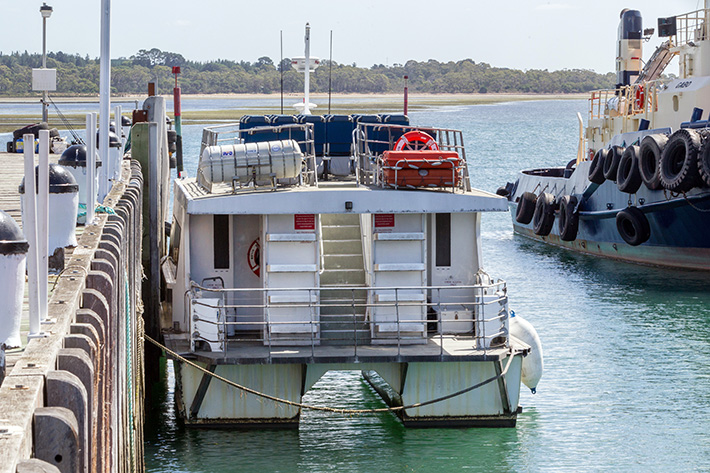TENDERS close in eight days for consultants to prepare “comprehensive business case” for a Cowes to Stony Point car ferry.
An economic study produced six years ago put the overall cost of the project at $47 million and predicted it would lead to greater employment on Phillip Island and the Mornington Peninsula during and after construction of two new terminals.
The shires of Mornington Peninsula and Bass Coast are now awaiting their call for submission from consultants to prepare a business case.
The state government has conributed $250,000 and the shires $25,000 each.
There is nothing new about the ferry plan, and several studies have already been made this century, starting with a pre-feasibility study by consulting engineers Arup 2003, followed in 2008 by Bays and Maritime Initiative – Stony Point to Cowes Vehicle Ferry, by Maunsell Australia.
In the July 2010 economic impact assessment commissioned by Bass Coast Essential Economics estimated the ferry service would carry 109,500 cars (323,000 passengers) in its first year increasing to 127,750 cars (375,000 passengers) in a decade.
The mayor of Bass Coast Cr Pamela Rothfield said calling for a business case tender was “a big week for tourism”.
The Essential Economics report was based on a 50-car ferry running from Stony Point and Cowes every two hours between 8am and 5pm.
The cost of building a new pier and infrastructure at Stony Point is put at $21m and $25.8m at Cowes. Both piers would be alongside the existing piers.
The study says the car ferry would have “little impact” on the existing passenger ferry service, which also calls at French Island. The state government is this month expected to announce the winning tender for a new five-year contract for the passenger-only service (“Island ferry out to tender” The News 21/3/17).
The Essential Economics 2010 study said 285 effective full time jobs would be created during the construction phase of the terminals at Stony Point and Cowes which “will ensure continual low unemployment rates in Bass Coast and Mornington Peninsula, noting that both shires have relatively high proportions of resident workers occupied in construction-related activities”.
The downside of the constructions would include temporary disruption to some commercial, recreational and tourism activities and traffic conflicts.
Once built, the ferries would require 14 full time staff and create 27 “indirect” full time jobs. An additional 98 jobs would be created in the wider tourism industry. The increased number of visitors to the peninsula and Phillip Island will see $14m injected into the local economies in the first year growing to $16.3m by the tenth year.


